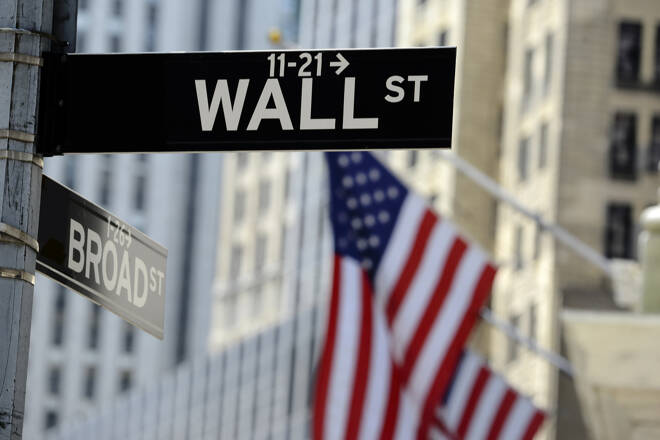Advertisement
Advertisement
US Indices Pare Back from New Multi-month Highs on Fed Tightening Reservations; Nasdaq 100 Drops 0.65%
By:
Equity market sentiment had initially been supported following another downside US inflation surprise.
Key Points
- The major US indices pulled back from mid-session highs after initially rallying on another downside US inflation surprise.
- The S&P 500 ended the session flat just above 4,200 while the Nasdaq 100 ended 0.65% lower.
- Tesla was hit as lawmakers pushed for it to be investigated. Disney rallied after Disney+ overtook Netflix for subscribers.
Indices Pull-back From Multi-Month Highs Amid Fed Tightening Reservations
Having surged by as much as 1.15% when it hit fresh highs since early May in the 4,250s earlier in the session, with sentiment bolstered after further evidence alluding to an easing of US price pressures, the S&P 500 fell back to close the session flat just above 4,200. Fed policymakers speaking in the last few days have been keen to emphasize that the Fed’s inflation fight remains far from won, despite the latest CPI and PPI figures suggesting that US price pressures are now past their peak.
The continued hawkish tone of Fed policymakers discouraged investors from getting too aggressive in chasing stocks higher and, by the latter half of the US session, profit-taking had set in, pushing the major indices lower. According to the CME’s FedWatch Tool, markets were on Thursday assigning a 59.5% probability that the Fed hikes interest rates by 50 bps in September and a 40.5% chance that they go with a 75 bps rate hike.
Recent data (like last week’s ISM surveys and official jobs report) have shown that US growth remains solid at the start of Q3. A few analysts have been expressing concerns that, whilst peak inflation may be in as so-called “cost-push” inflationary pressures fade, demand in the US economy could remain hot enough to keep inflation elevated above the Fed’s 2.0% target for some time (reffered to as “demand-pull” inflation).
Some analysts fear that equity markets may be getting complacent to the risk that the Fed still needs to take interest rates above 4.0% in 2023 in order to snap demand. Data showing another small rise in the weekly number of initial jobless claims in early August will do little to ease these concerns as the weekly jobless claims number remains at levels that have historically been consistent with a healthy labor market.
Tesla Leads Nasdaq 100 Decline, Disney+ Overtakes Netflix in Subscriber Numbers
The big tech/growth stock-heavy Nasdaq 100 index, which also hit its highest levels since early May midway through the session, ultimately finished Thursday trade down 0.65%. The decline was led by the likes of Tesla, Amazon, Alphabet and Microsoft. Tesla’s stock price was probably weighed by a Reuters report on Thursday that US lawmakers have asked the US National Highway Traffic Safety Administration about whether it is considering an investigation into the “mounting number of fatalities involving Tesla vehicles crashing into tractor trailers” while using autopilot.
A jump in crude oil prices meant that the S&P 500 GICS Energy sector was the best performer of the bunch, gaining over 3.0% on the day. Health Care, Consumer Discretionary and Information Technology were the worst performing sectors, losing between 0.5-0.7% each. In terms of notable earnings, Disney’s share price surged nearly 5.0% to its highest since mid-April after it revealed that its Disney+ subscription streaming service surpassed Netflix for the first time after reaching 221.1 million as of the start of July.
About the Author
Joel Frankauthor
Joel Frank is an economics graduate from the University of Birmingham and has worked as a full-time financial market analyst since 2018. Joel specialises in the coverage of FX, equity, bond, commodity and crypto markets from both a fundamental and technical perspective.
Did you find this article useful?
Latest news and analysis
Advertisement
